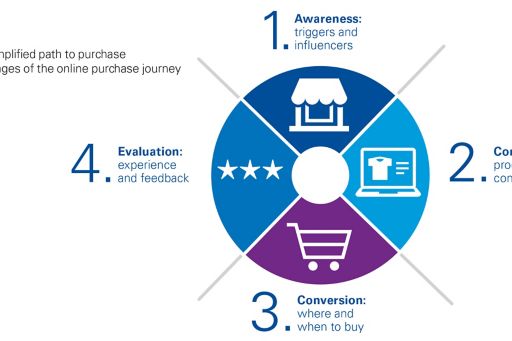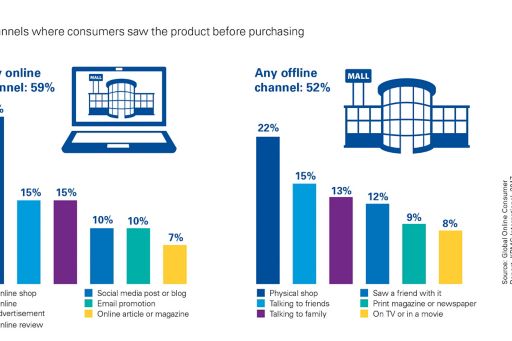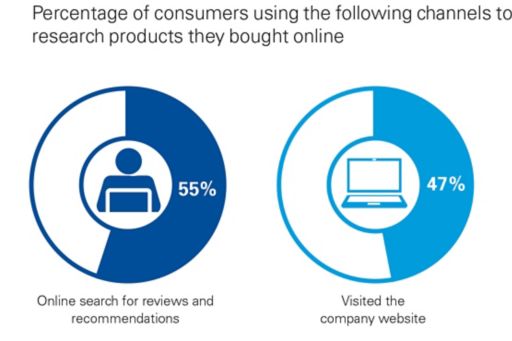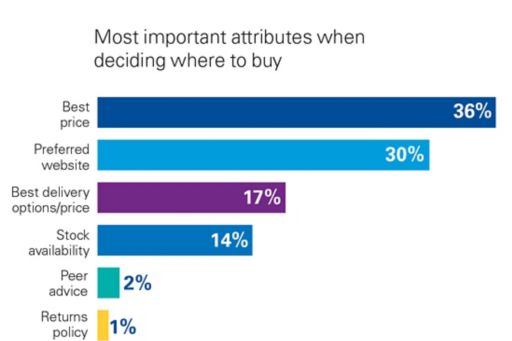The path to purchase journey
The path to purchase journey
The evolution of the ‘path to purchase’ over the past decade due to the Internet, digital innovation and the rise of ecommerce.

The ‘path to purchase’ is a traditional shopping concept that has evolved significantly over the past decade due to the Internet, digital innovation and the subsequent rise of ecommerce. Although the digital revolution hasn’t altered the fact that consumers still experience the same stages of awareness, consideration, conversion and evaluation, the journey itself has changed. Instead of a path to purchase that is traditionally linear, it has become more of a cycle or even a web. Consumers move through and back and forth between the stages, influenced by a myriad of both offline and online factors at every stage.
In order to investigate the drivers, motivators, and inhibitors affecting consumers’ decisions during a typical online transaction, a simplified cyclical path to purchase model was used for this study.

Awareness
When comparing the impact of online versus offline touchpoints in creating the first trigger moment, it is interesting to observe that 52 percent of consumers cited at least one offline channel as a source of initial awareness, and 59 percent cited one or more online channels.

Retail websites or online shops were the most common source of initial product awareness, cited by nearly a third of consumers, and online advertisements were cited by 15 percent. At the same time, physical shops were the second most popular source of awareness, cited by 22 percent of consumers.
Ecommerce is clearly far from being an online-only affair. Both online offline channels are effective in creating consumer awareness and demand, especially when they are used together.
Millennials are more likely than the older generations to be influenced by online sources such as social media or peer reviews – but they are also more likely to be influenced by offline channels. Millennials were 25 percent more likely than Baby Boomers to have seen their most recent purchase in a shop, nearly 50 percent more likely to have talked to a friend about it, and more than twice as likely to say they saw a friend with it.
Although Millennials are certainly digital natives first, they are also at least as active and influenced as their parents are beyond the digital world.
Consideration
During the consideration stage, the importance of online channels continues to prevail, with the top two channels for research being online reviews (cited by 55 percent of respondents) and company websites (47 percent).

Offline channels are also a significant source of information, with 26 percent of consumers saying they visited a physical shop during the research stage and 23 percent saying they spoke to friends or family about the product.
Overall, price or promotions (identified by 27 percent of respondents) were the factors most likely to influence consumers’ decision regarding which product or brand to buy online. After price and promotions, product features (23 percent) or brand reputation (22 percent) were also commonly identified as the top considerations when making a final product choice.
Conversation
In the conversion stage of the online purchase journey, the consumer exercises two decisions: where, and when, to buy a product. In the online shopping arena, however, successfully engaging consumers during the first two stages of the purchase journey far from guarantees success in the third stage.
As during the final product decision stage, price remains the most common consideration when consumers are deciding where to buy, particularly in certain categories such as electronics. Having a website that consumers like and/or trust is also important, especially in Asia, where consumers said buying from a preferred website was more important than price.

Evaluation
In a circular or web path to purchase model, the evaluation stage is at least as important as, and inextricably linked with, the awareness and consideration stages. Positive customer experiences are critical in generating loyalty and repeat purchases, and in an era of social media and increasingly trusted peer reviews, voicing customer experiences can significantly influence future buying decisions – both positively and negatively.
Around 30 percent of online consumers said they posted product feedback online and, in Asia, consumers were nearly 50 percent more likely than average to post a review. Understanding where consumers are posting feedback can help companies become more proactively engaged in monitoring, managing and fostering positive online customer reviews.
Generational trends indicate an increasing use of social media sites such as Facebook, WhatsApp, Instagram, blogs and Twitter for posting and reviewing feedback. The implication for companies is that user-generated reviews are being posted on sites that are increasingly beyond their sphere of control or influence. Companies will need to actively integrate these social media sites into their marketing and customer strategies.
